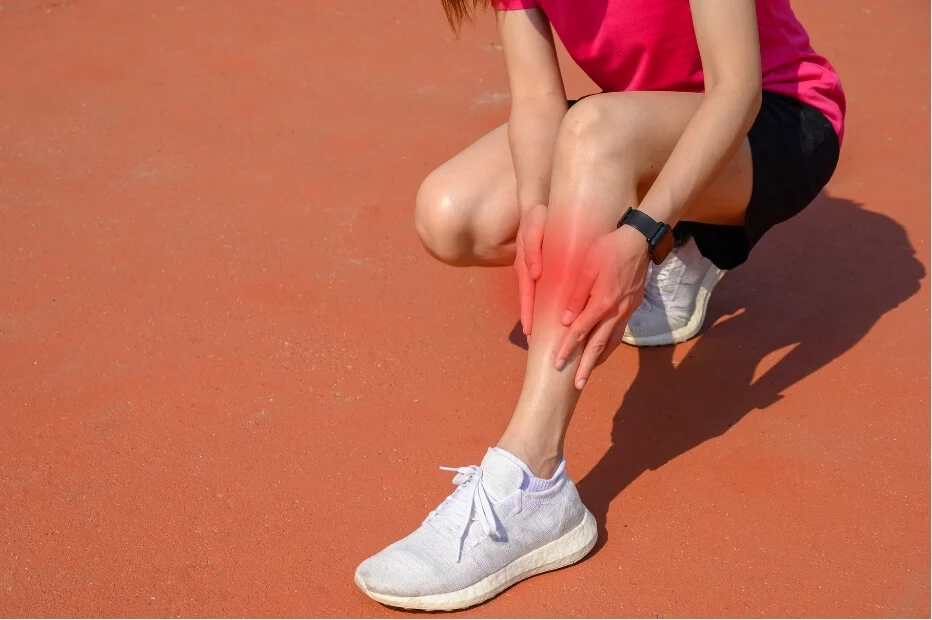Ever felt that nagging ache along the front of your lower leg after a run or workout? You might be dealing with shin splints—medically known as medial tibial stress syndrome. Left unchecked, these aches can sideline you from running, sports, or just enjoying your day. Understanding how to use the right shin splint exercises can make all the difference.
At Proactive Health, we believe in empowering you with simple, targeted exercises that bring relief now and build long‑term resilience. This guide walks through why those shins ache, what exercises actually work, and how to prevent shin splints in the future.
Understanding Shin Splints
What Are Shin Splints?
Shin splints involve painful inflammation along the shinbone (tibia) and the muscles attaching to it—typically caused by repeated stress. Common symptoms include:
- A dull ache or throbbing along the inner edge of the shin
- Tenderness or slight swelling
- Pain that starts during exercise and may linger afterward
Why They Develop
Shin splints often stem from:
- Sudden jumps in activity: too much running, too soon
- Poor biomechanics: overpronation, tight calves, weak hips
- Faulty gear: worn‑out shoes or hard running surfaces
- Muscle imbalances: weak anterior (front) shin muscles
Common Causes of Shin Splints
Let’s break down the typical culprits behind shin splints at Proactive Health:
1. Overuse from Running or Jumping
Increasing mileage or adding high-impact exercises without building strength or rest leads to stress on the tibia and shin muscles.
2. Improper Foot Mechanics
Flat feet or inward collapsing arches place extra strain on the muscles and tendons along the shin.
3. Weak Surrounding Muscles
Hip, glute, and calf weakness can shift more impact and demand onto the shins during movement.
4. Inadequate Footwear or Surface
Running on concrete or using worn-out shoes with poor cushioning can worsen the shock absorbed by your lower legs.
5. Training Imbalances
Only running or focusing on certain muscles without balanced cross-training increases risk and imbalance.
Diagnosing Shin Splints
At‑Home Assessment
Try these self-checks:
- Pinch pressure: Press along the edge of your shinbone—if tender, shin splints are likely.
- Pain timeline: Does it twitch on impact during exercise and linger afterward?
- Swelling check: Slight puffiness or warmth around the shin suggests inflammation.
Professional Evaluation
At Proactive Health, we’ll take it a step further:
- Movement assessments (gait, running form)
- Palpating shin and muscle groups
- Strength and flexibility tests: ankles, calves, hips
- We might recommend imaging (ultrasound, X-ray) to rule out stress fractures or other underlying issues if pain is severe or persistent.
Shin Splint Exercises & Stretches
Here’s a lineup of proven exercises that target the root causes of shin splints—muscle weakness, tightness, and imbalance.
1. Calf and Shin Stretch Series
a. Calf Stretch on Incline
- Stand with toes on a step, heels overhanging
- Drop heels slowly until you feel a gentle stretch
- Hold 30 seconds, repeat 3x
b. Dorsiflexor (Shin) Stretch
- Kneel with feet flat behind you
- Gently sit back toward your heels until you feel stretch in the front lower leg
- Hold 30 seconds, repeat 3x
2. Toe Raises & Heel Walks
a. Toe Raises
- Stand with heels on floor, raise toes upward
- Lower slowly, repeat 3 sets of 15–20 reps
b. Heel Walks
- Walk on heels with toes lifted, for 20–30 seconds
- Builds front shin muscle strength (tibialis anterior)
3. Resistance Band Dorsiflexion
- Anchor band under your foot, pull sneaker toward you
- Control the return, 3 sets of 15 reps per leg
- Enhances coordination and strength in lower leg
4. Eccentric Calf Raises
- Stand on edge of step on one foot
- Raise up with both feet, lower down slowly on one
- 3 sets of 10 reps each leg
5. Single‑Leg Balance Reaches
- Stand on one leg, bend forward to touch a marker while keeping weight on one foot
- Repeat 10 reaches each leg
- Helps balance and ankle stability
6. Hip & Glute Activation
a. Clamshells
- Lie on your side with knees bent
- Open top knee upward, squeezing the glute, 3 sets of 15 per side
b. Lateral Band Walks
- Place band just above knees, squat slightly, step side to side
- 2 sets of 20 steps
7. Foam Rolling & Self‑Massage
- Roll calves and shins gently with a foam roller or massage ball
- 1–2 minutes each area
- Supports circulation and inflammation control
Structuring a Shin Splint Recovery Routine
Here’s a sample weekly routine combining the exercises above:
Day 1
- Warm‑up (5 mins walking + dynamic stretches)
- Resistance band dorsiflexion & toe raises
- Calf and shin stretches
- Glute activation exercises
Day 2
- Low‑impact cardio (bike, swim) 20 mins
- Foam roll lower legs and calves
Day 3 (Repeat Day 1)
Day 4
- Heel walks, balance reaches
- Lateral band walks
- Foam roller session
Alternate light cardio every other day. Always end each session with 5–10 minutes of stretching and icing sore areas as needed.
Prevention Tips & Lifestyle Fixes
Choose the Right Footwear
Get properly fitted shoes—rotate them every 300–500 miles to preserve shock absorption.
Build Gradually
Adhere to the 10% rule: increase running distance by no more than 10% weekly.
Incorporate Strength Training
Include ankle, calf, glute, and core routines 2–3 times a week.
Vary Surfaces
Mix up concrete runs with softer trails or treadmill work.
Monitor Pain Closely
If pain persists beyond 48 hours or worsens, reduce activity and consider professional help.
Keep Mobility Intact
Daily calf/shin stretches help beat tightness that sets up shin splints.
When to See Proactive Health
Despite your best efforts, persistent shin splints could signal:
- Stress fractures
- Compartment syndrome
- Nerve entrapments
At Proactive Health, we go beyond exercises by offering:
- Biomechanical analysis (gait, alignment)
- Customized training plans
- Orthotics and footwear advice
- Physical therapy tailored for shin splints
How Proactive Health Helps You Bounce Back
- Initial Assessment
Movement screening, strength checks, and form evaluation. - Personalized Exercise Program
Based on your unique biomechanics, goals, and lifestyle. - Guided Rehab Sessions
Hands‑on therapy to reduce pain, restore function, and prevent recurrence. - Education & Ongoing Monitoring
We teach proper technique, lifestyle tweaks, and track improvement so you stay strong.
Don’t let shin pain sideline you. Whether you’re a runner, athlete, or weekend warrior, effective shin splint exercises supported by expert guidance can mean the difference between getting back in the game—or sitting it out.
Ready to step ahead of the pain? Contact Proactive Health today to schedule a personalized assessment and start your custom rehab plan. We’ll help you hit the road stronger and pain-free.



